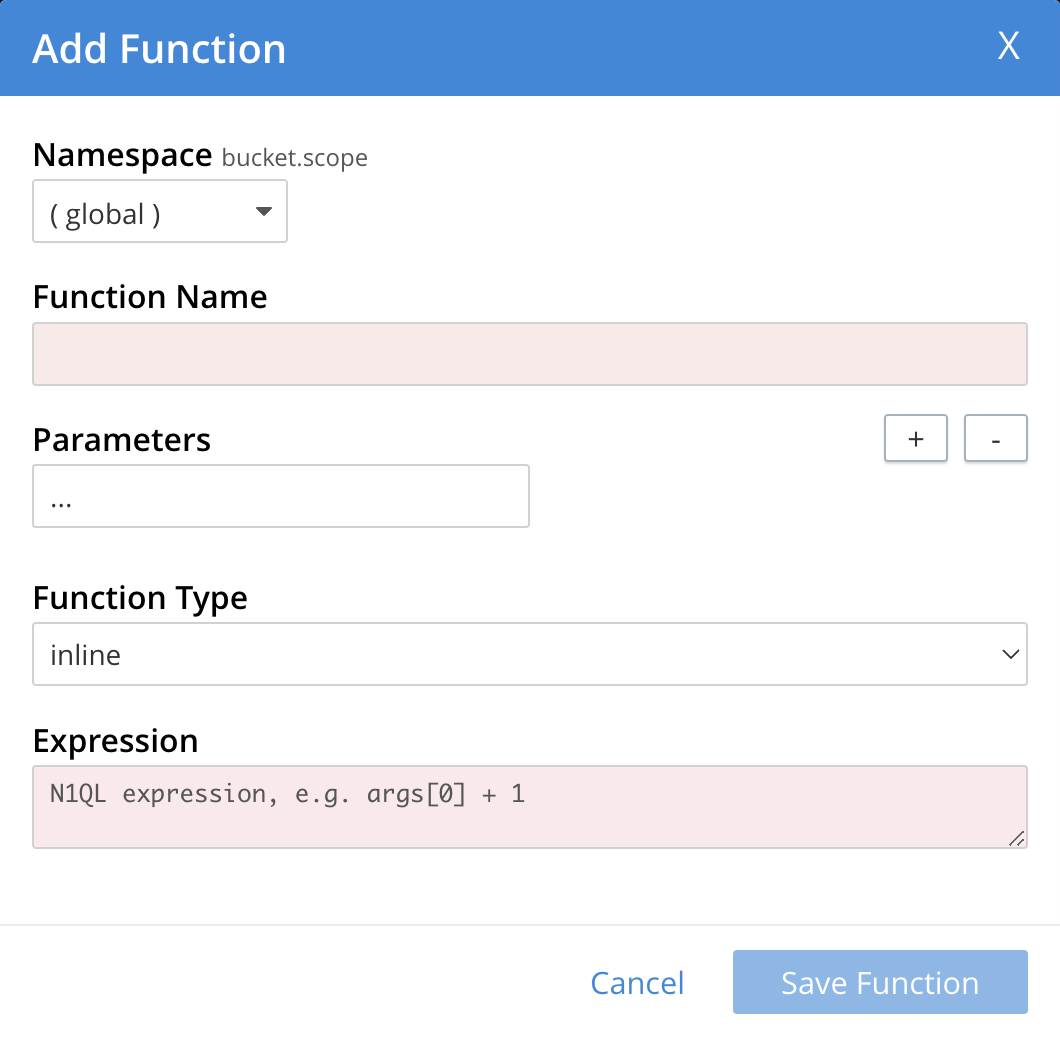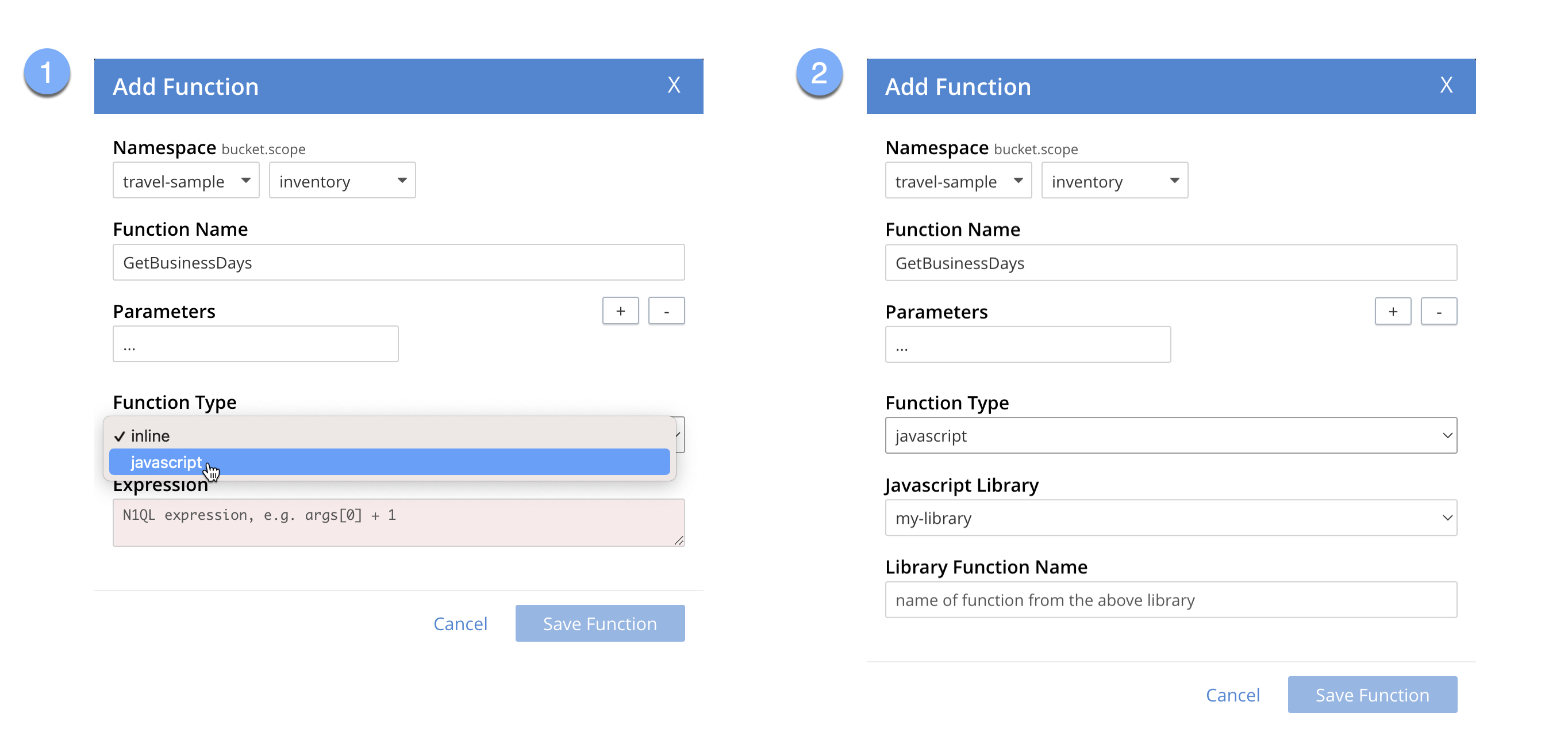How to create a user-defined function to call external JavaScript code.
Introduction
You cannot call external JavaScript code directly from a SQL++ query. You must create a SQL++ user-defined function to reference the external JavaScript code.
If you have created a JavaScript function in an external library (see Creating a JavaScript Library), you must create a SQL++ user-defined function to reference it.
You can also create a SQL++ user-defined function and the external JavaScript code in a single operation. In this case, the JavaScript code is not stored in an external library.
Creating a SQL++ User-Defined Function to Reference an External Library
To create a SQL++ user-defined function to reference an external library, do one of the following:
-
Use the UDF UI in the Query Workbench.
-
Use the SQL++ CREATE FUNCTION statement, and reference the external library and JavaScript function.
-
Query Workbench
-
SQL++
-
Access the UDF screen from the administration console.

-
Click on the + add function link.

The Add Function dialog is displayed.

-
Use the Namespace drop-down lists to select the bucket and scope where your JavaScript function resides.
-
Fill in the Function Name of your SQL++ user-defined function.
-
Specify Parameters for the function.
The …in the parameters box denotes a variable length list of parameters. -
Select JavaScript for the function type. A field appears in the dialog with a list of available libraries in the namespace you selected.

From this list select the library containing your function.
-
Enter the name of the JavaScript function in the
Library Function Namefield.
Execute the CREATE FUNCTION in the CBQ Shell to create the SQL++ user-defined function:
CREATE FUNCTION default:`travel-sample`.`inventory`.GetBusinessDays(...) LANGUAGE JAVASCRIPT as "getBusinessDays" AT "travel-sample/inventory/my-library";| The SQL++ user-defined function will take the same scope as the JavaScript UDF it is referencing. |
Related Links
-
To create a SQL++ user-defined function and the external JavaScript code in a single operation, see CREATE FUNCTION.